This guide is all about making Japanese cooking a little easier by helping you find ingredient substitutions. No more running around to multiple Asian grocery stores or giving up on a recipe just because you can’t find or afford a specific ingredient!
Japanese recipes often use unique ingredients that can be tricky to track down. Plus, when you do find them, they can be surprisingly expensive (I couldn’t believe a pack of shimeji mushrooms was $2.60 at checkout!).
The substitutions in this post are just some ideas to get you started. Feel free to play around and see what works best for you!
But, keep in mind that some recipes might need specific substitutions, so always check the recipe’s recommendations before jumping in.
💡New to Japanese Cooking? Check out this step-by-step guide to kickstart your cooking journey!

🧂Sauces and Seasonings
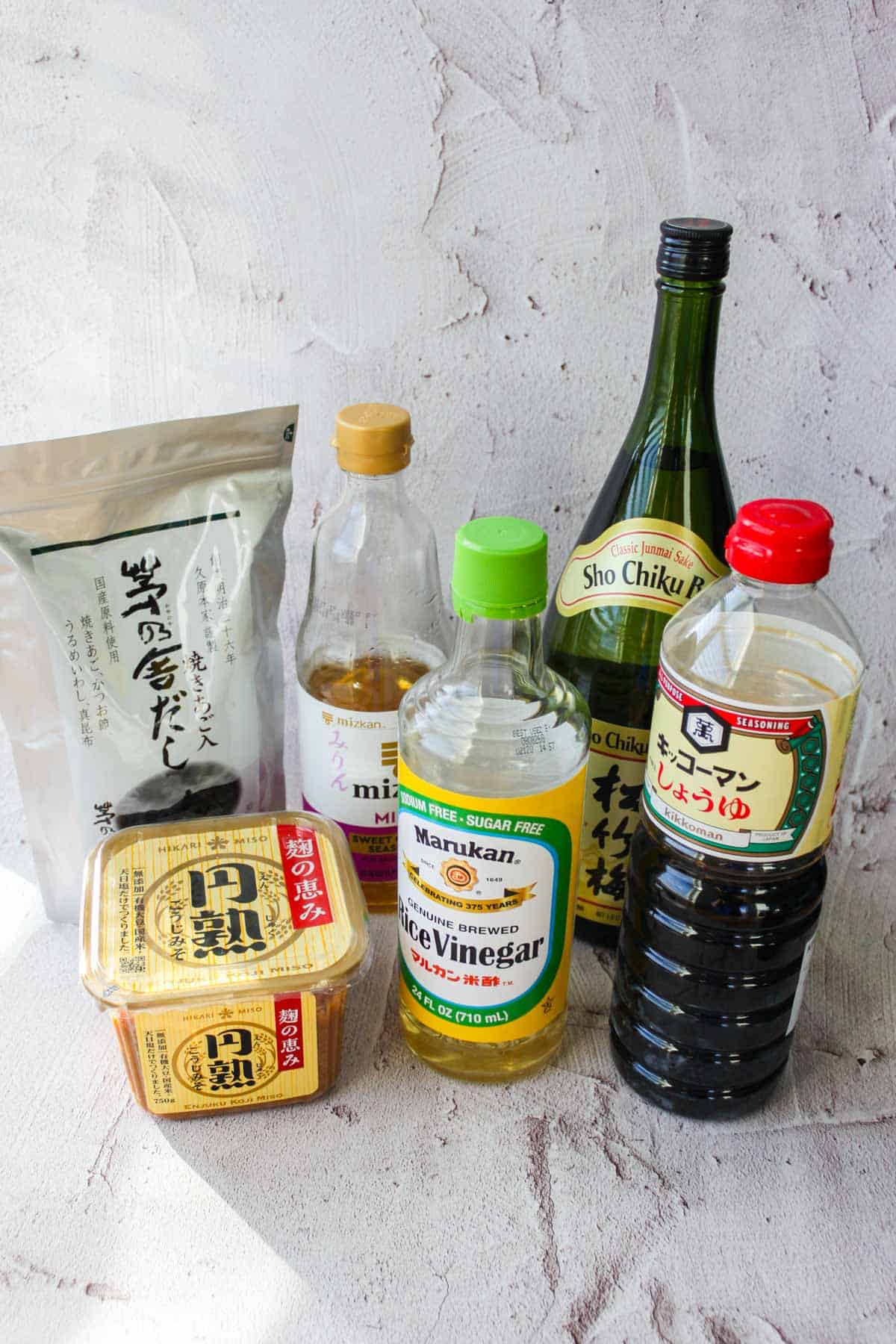
Soy Sauce
- Quick Substitute: Tamari (gluten-free) or coconut aminos
- Okay Substitute: Diluted Worcestershire sauce, mentsuyu, oyster sauce, or ponzu
Note: The flavor might vary slightly, especially with Worcestershire sauce, mentsuyu, oyster sauce, or ponzu, so taste as you go and adjust.
💡Learn more: A Beginner's Guide to Japanese Soy Sauce
Mirin
- Quick Substitute: 1 tablespoon mirin = 1 tablespoon sake + 1 teaspoon sugar
Note: Mirin adds umami, so consider adding extra umami flavors to the dish.
💡Learn more: A Beginner's Guide to Mirin
Sake (Regular Drinkable Sake)
- Quick Substitute: Cooking sake, Shōchū, or white wine
- Okay Substitute: Mirin
Note: Mirin adds sweetness, so be sure to balance the flavors accordingly.
💡Learn more: A Beginner's Guide to Sake
Miso (Japanese Fermented Soybean Paste)
- Quick Substitute: 30g silken tofu + 1 tablespoon soy sauce, or doenjang (Korean miso)
Note: This won’t be as thick as real miso, but the flavor and color will be similar. You can use this for stir-fries or miso soup. If you’re allergic to soybeans, you can try miso made from chickpeas or brown rice.
💡Learn more: A Beginner's Guide to Miso
Rice Vinegar
- Quick Substitute: Citrus juice, apple cider vinegar, or white vinegar
Note: Rice vinegar has a milder, slightly sweet taste, so you might need to adjust the sugar and salt in the recipe when using one of these substitutes.
Shichimi Togarashi (Japanese 7 Spice)
- Quick Substitute: Ichimi togarashi, red chili powder, or coarsely ground black pepper
Note: Shichimi togarashi is usually sprinkled on top of dishes to bring in that complex, flavorful kick. Since there are so many different kinds—like curry-flavored or sansho-flavored versions—it can be tough to find an exact substitute. But, if you're just looking to add some heat to your dish, the substitutions listed earlier will definitely do the trick!
Dashi
- Quick Substitute: Dashi powder, or umami-rich ingredients like shiitake mushrooms, kombu, or dried anchovies
Note: Dashi is key in many Japanese dishes, so I wouldn’t recommend substituting it with things like chicken bouillon. Try adding umami-rich ingredients to enhance the flavor, or use a high-quality dashi powder like Kayanoya Dashi for a quick umami boost.
💡Learn more: A Beginner's Guide to Dashi (plus homemade recipes!)
Ponzu
- Quick Substitute: A mix of soy sauce and a sour condiment, like citrus juice or vinegar
- Better Substitute: ½ teaspoon dashi powder + 2.5 tablespoons soy sauce + 2 tablespoons vinegar or citrus juice + 1 tablespoon mirin
Note: Dashi and mirin are optional, but they do add extra flavor. Mix everything and microwave for 10 seconds to warm it up.
💡Make your own: [Homemade Ponzu Recipe] (coming soon!)
Oyster Sauce
- Quick Substitute: 2 tablespoons soy sauce + 1 teaspoon chicken stock powder + ½ tablespoon sugar
Note: This mixture is a bit saltier than regular oyster sauce, so you might want to reduce the salt in your recipe.
Mentsuyu
- Quick Substitute: A mix of soy sauce, mirin (or sugar), and dashi
- Better Substitute: 1–2 tablespoons bonito flakes (or dashi powder) + 2 tablespoons soy sauce + 2 tablespoons sake + 2 tablespoons mirin + 1 teaspoon sugar
Note: Microwave the mixture for 30 seconds to a minute until the sugar dissolves, then strain to remove the bonito flakes.
💡Make your own: [Homemade Mentsuyu Recipe] (coming soon!)
🗄️Pantry Staples
Japanese Rice (Short-Grain Rice)
- Quick Substitute: Medium-grain rice
Note: I wouldn't recommend using long-grain rice as a substitute because the texture is just too different. Also, sticky rice (or mochi rice) is way too sticky and is usually reserved for making mochi, so it’s not the best replacement either.
💡Learn more: [Ultimate Guide to Japanese Rcie] (coming soon!)
Potato Starch
- Quick Substitute: Cornstarch
Note: Cornstarch works as a substitute, but keep in mind that it’ll create a slightly thinner texture than potato starch. Still, it does the job!
Japanese Mayonnaise
- Quick Substitute: American mayonnaise
- Better Substitute: 1 tablespoon vinegar + dashi powder or any "umami" source such as bouillon paste + a pinch of salt + 300g American mayonnaise
Note: It won’t have the same richness as Japanese mayonnaise, but the taste will still be pretty close!
Japanese Curry Cube
Note: Unfortunately, there's no quick substitute for Japanese curry cubes, but the good news is you can make them yourself! If you're looking for a quicker solution, check out this guide on how to make Japanese curry without the cubes—it might be just what you need!
💡Make your own: [Homemade Japanese Curry Cubes Recipe] (coming soon!)
💡Recipe suggestion: [Japanese curry without curry cubes] (coming soon!)
🥕Fresh Produce
Daikon (Japanese Radish)
- Quick Substitute: Korean radish, turnips, radish
Note: The closest substitute for Japanese radish would be Korean radish, which is a bit rounder and firmer. If you can't find that, turnips or regular radishes can work in some recipes too! They might not have the exact same flavor, but they'll do the job.
Shiso Leaves
- Quick Substitute: Vietnamese perilla (lá tía tô)
Note: I haven't been able to find a perfect substitute myself, but some people say Vietnamese perilla has a flavor similar to Japanese shiso leaves. That said, shiso has such a unique taste that it’s not the easiest to replace. If you’re up for it, growing your own shiso leaves could be a fun option!
Yuzu (Citrus)
- Quick Substitute: Meyer lemon
Note: Meyer lemon has a scent that's pretty similar to yuzu, so it can work as a substitute in some recipes. It won’t be exactly the same, but it can still bring that citrusy freshness!
Japanese Eggplant
- Quick Substitute: Graffiti eggplant, Chinese eggplant
Note: American eggplant has thicker, firmer skin, so it’s not the best choice for Japanese recipes. It can be a bit too tough compared to the more delicate Japanese eggplant.
Renkon (Lotus Root)
- Quick Substitute: Celery, carrots, potatoes, or other crunchy root vegetables
Gobo (Burdock Root)
- Quick Substitute: Parsnip or other crunchy root vegetables
Negi (Long Leek)
- Quick Substitute: Regular leek, onion, green onions
Note: American leeks are thicker and firmer than Japanese long leeks, but once cooked, their texture and taste become pretty similar (just keep in mind they’ll take a bit longer to cook). If you're in a pinch, green onions can work for the green part of the leeks, and onions are a good substitute for the white part.
Shimeji/Enoki Mushrooms
- Quick Substitute: Other mushrooms, such as brown mushrooms
Note: The texture and taste might be a bit different, but you can totally swap shimeji and enoki mushrooms with other types of mushrooms since they all belong to the same family! You might have to adjust the cooking time a little, but they'll still work in your dish.
Japanese Cucumber
- Quick Substitute: Seedless cucumber, English cucumber, Persian cucumber
Note: These cucumbers have fewer seeds and softer skins compared to regular cucumbers, so they make a great substitute for Japanese cucumbers in your recipes!
Kabocha (Japanese Pumpkin)
- Quick Substitute: Buttercup squash
Note: Kabocha is sweeter, softer, denser, and less watery than other squashes, so if you're looking for a substitute, buttercup squash is your best bet!
Nagaimo
- Quick Substitute: Grated zucchini or minced okra (for okonomiyaki)
Note: If you can't find nagaimo for your okonomiyaki, no worries! You can either leave it out or swap it with grated zucchini or minced okra. It’ll still taste delicious!
Mitsuba
- Quick Substitute: Other green garnishes, such as arugula or green onions
Note: Unfortunately, there’s no perfect substitute for mitsuba, but since it’s usually used as a garnish, you can try some of the options listed above. If you’re up for it, you could even grow your own mitsuba from seeds!
🍳Be Creative!
These are just some suggestions, so don’t hesitate to explore other substitution options that might work even better for you!
I’d love to hear your thoughts—drop a comment below if there are other ingredients you want me to cover. Your feedback really helps me create content that’s useful for you! 🙂
More on this topic...
- A Beginner's Guide to Japanese Cooking
- [Best Places to Buy Japanese Ingredients Online] (coming soon!)
📌Pin This Guide For Later!
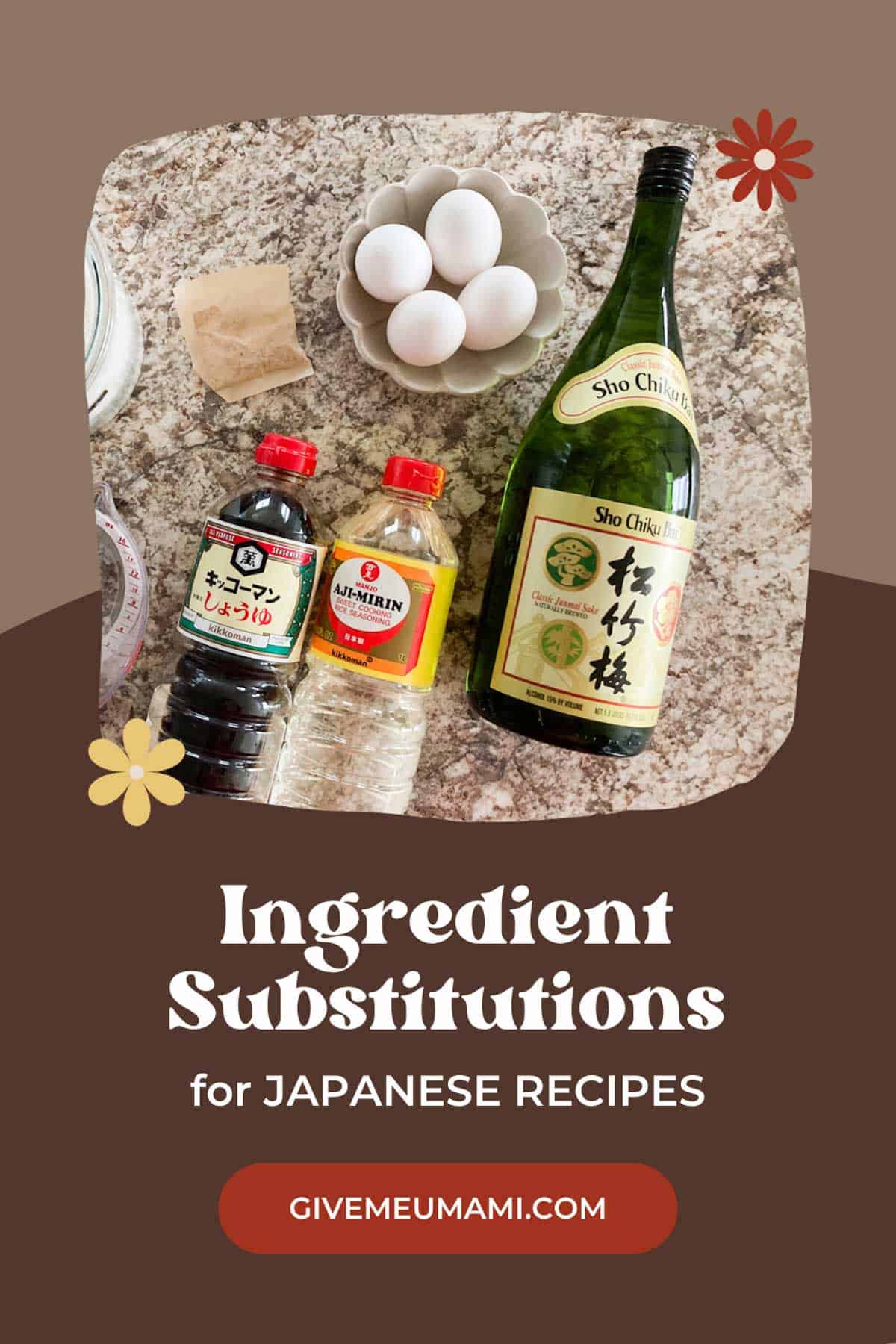

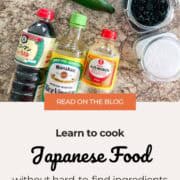

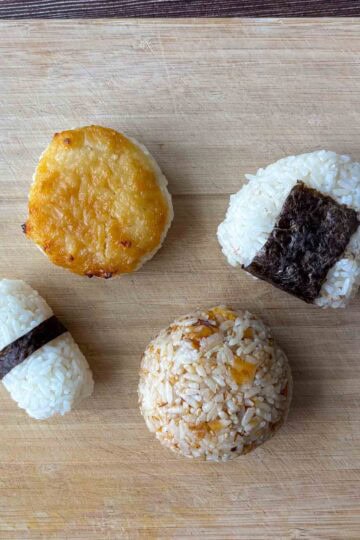
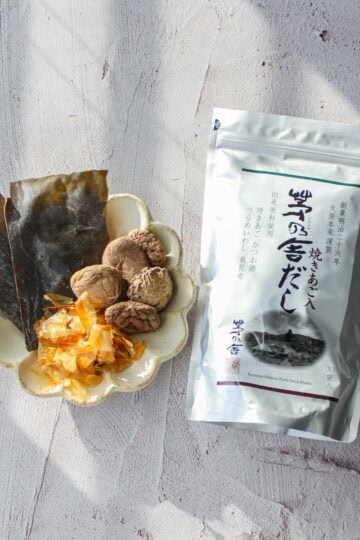
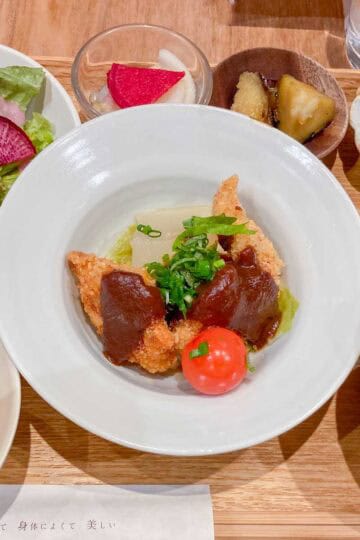
Comments
No Comments